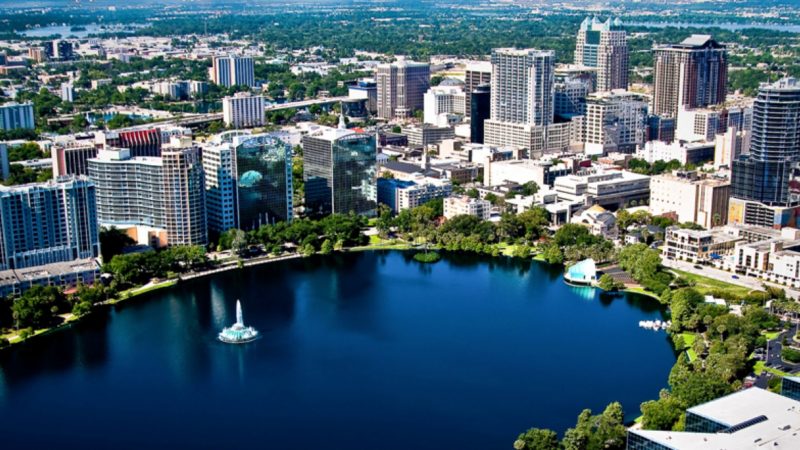By the year 2050, Orlando commissioners want all the electricity used in the city to come from renewable sources of energy like solar and wind power.

In a unanimous vote on Tuesday, August 8, 2017, the Orlando City Council agreed to adopt this goal, joining San Diego, Salt Lake City and 37 other cities across the U.S. that have adopted a 100 percent clean-energy target.
Orlando is the largest city in Florida committing to this goal so far, according to the Sierra Club, with St. Petersburg and Sarasota right behind. Aside from combating climate change and pollution, the city argues the move toward renewable energy increases economic opportunities in Central Florida by creating local jobs in the industry. Orlando Mayor, Buddy Dyer, didn’t call out the climate change aversion of President Donald Trump or the Republican-led Florida Legislature by name, but did say city mayors had to lead the fight against rising seas and increasing temperatures.
“This administration has decided not to honour our commitment to the Paris climate accord, but a lot of mayors around the country have picked up the reins to say if we’re not doing it at the federal level, its incumbent that we lead at the local level,” Dyer says. “More than 50 percent of the world’s population now lives in cities, so we have to be the ones that are leading on the important issues that are of consequence for not just this year, but for decades and even centuries to come.”
Chris Castro, director of sustainability for the city, says over the last decade, Orlando has been trying to move the needle through its Green Works Orlando initiative to become one of the most sustainable cities in the Southeast. The city has already committed to reducing 90 percent of its air pollution and greenhouse gas emissions by 2040 in accord with the Paris Climate Agreement. To achieve this, Orlando has already set a goal of powering 100 percent of municipal operations using renewable energy by 2030. Last year, the U.S. Department of Energy and the Solar Foundation declared Orlando a “SolSmart City” for its leadership on expanding clean energy sources.
“The power from the sun is cheaper to produce electricity than the power from fossil fuels, including coal and even natural gas,” Castro says. “What we want to do is maintain the affordability of our electricity rates. A lot of people think that just by going solar, it’s going to be more expensive, and that is not the case. We’re actually going to be able to levelize our cost of power over decades, and we’ll be able to maintain the affordability and the reliability of our power here in the City of Orlando.”
The council is also particularly interested in the potential employment opportunities created by having this commitment to clean energy. Castro says last year in Florida, solar jobs grew 10 times faster than the overall state economy, adding 1,700 new jobs. Commissioner Sam Ings proposed moving the citywide goal of 100 percent renewable energy to 2035, and Castro said that target could be updated as more technology comes along.
The resolution was applauded by members of the First 50 Coalition, a broad alliance pushing for local sustainability issues that includes the League of Women Voters of Orange County, the Sierra Club and FL SUN.
“I see this vote as historic and a first step toward what we can do in leadership on the national stage,” says Sara Isaac, director of partnerships for the League. “I think that you are sending a signal across the nation of the kind of city Orlando wants to be.”
In a statement, Phil Compton from the Sierra Club’s Ready for 100 Campaign in Florida also praised the decision by Orlando commissioners.
“All across our state and our nation, cities are committing to a future powered by 100 percent clean and renewable energy for all,” Compton says. “Today, Orlando joins this growing movement of cities that are ready for 100 percent clean, renewable energy.”
Courtesy: Orlando Weekly
